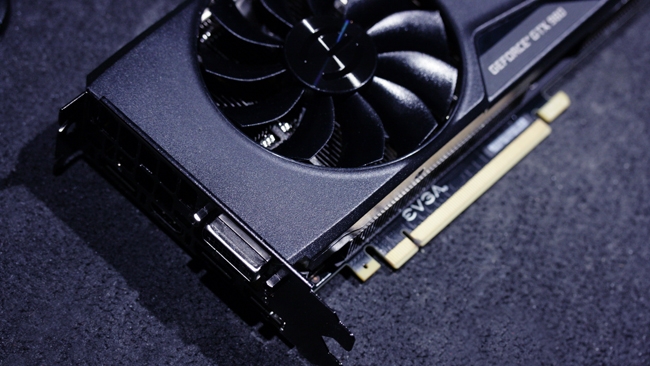
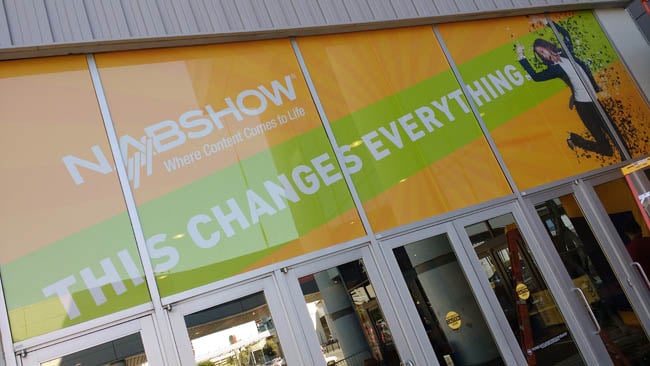 Hyperbole and NAB tend to go hand in hand...
Hyperbole and NAB tend to go hand in hand...
With 2017's tradeshow season in full swing, Phil Rhodes looks ahead to the biggest of them all, NAB, and makes some predicitoins of what we can expect to see in the vast halls of the Las Vegas Convention Centre this time round.
Already in the course of 2017, some fairly significant announcements have already occurred, with Blackmagic's Ursa Mini Pro among them. It's easy to understand why any company would prefer to avoid the rather crowded environment of NAB, but even so, that hasn't prevented the saturation of recent events with hoardings heralding anything from a change in the colour of the sky, an alteration of the speed of light, up to noticeable alterations to the underlying nature of reality thanks to improvements in film and television equipment. Who, really, would choose to leap into that seething, piranha-infested pool?
Well, me, apparently, because I'm going to make some predictions.
Real-time virtual cinematography
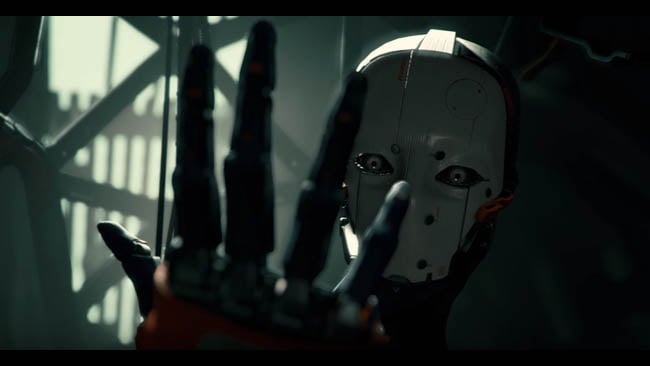
The short film Adam was created using the Unity game engine
Computer-generated characters are becoming as common as computer-generated environments, and as tools improve, both of those things are becoming more akin to a conventional shooting process in a studio than a software engineering process in an office. As such, computer rendering, which is something we once saw only at Siggraph, is now commonly seen at NAB as well, whether that involves virtual sets, real-time preview of motion capture or something more advanced. Back in 2014, we talked (See: [http://www.redsharknews.com/technology/item/1638-with-unreal-engine-4-0,-we-re-closing-in-on-making-films-with-video-games-engines]) about the potential for software written to support computer games to be adopted not only as a preview tool for CGI but as the final render in itself.
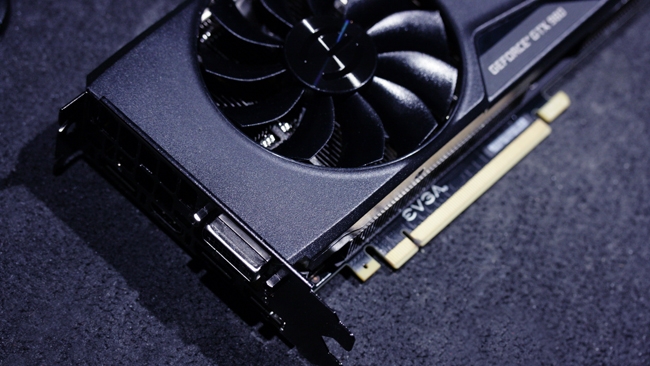
Consumer graphics cards are easily capable of HD and 4K rendering, with some caveats as to the sort of scene content that's practical
The quality of images derived from real-time renderers has been skyrocketing. As the Disney/Pixar collaboration has continually shown, films do not need to be photorealistic in order to succeed both artistically and financially. Even so, with the same GPU technology also accelerating things like global illumination models (which really can't be applied to real-time renders, at least not yet), the conventional, offline-rendered approach has also improved. Between the two, better previews have made it easier to animate movies, providing more immediate visual feedback and at the very least making the preview look more like the final render
Whether this means we'll see a production created using real-time rendered graphics soon is necessarily speculation, but it wouldn't be any great surprise.
Much talk of narrative VR
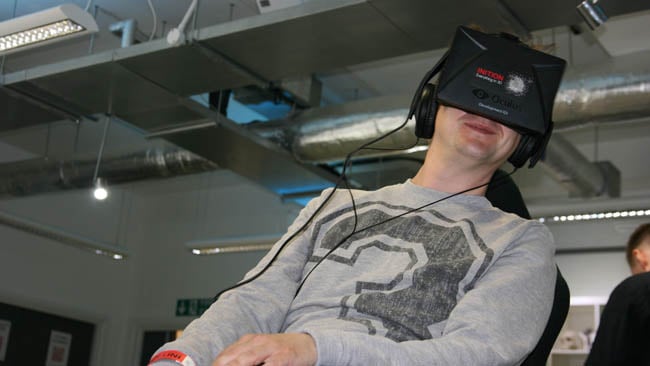
Games are a natural environment for VR. We shouldn't overlook narrative content, but we should think hard about it
Because no company is ever going to start promoting the fact that it can't do something, the fundamental differences between pre-rendered and interactive VR are likely never to become headline news. Nevertheless, what we're talking about here is the reality that games and movies are wildly different disciplines best approached with very different design criteria. The fact that VR can add a lot to some games is more or less beyond doubt; whether it's ever been particularly well applied to the movies is debatable.
If VR is ever going to be useful for entirely pre-determined content, some very new and different approaches in storytelling, direction, production design and cinematography will have to be developed. There have been many attempts to do this recently, with even Cannes getting in on the act, although the upshot has largely been an entirely conventional piece of filmmaking in which the viewer has the option to look somewhere the action isn't. This is not making the best use of either film or VR.
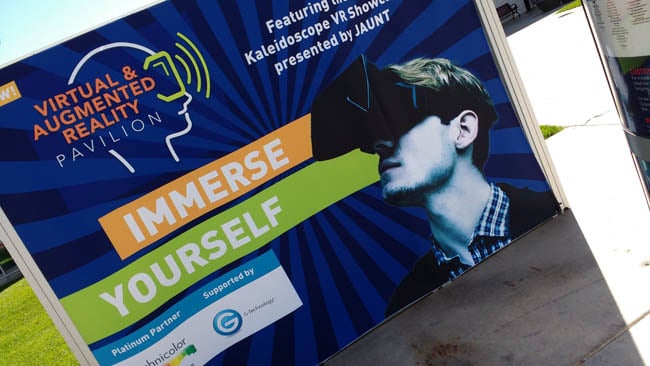
VR has already been a big deal at NAB, but the split between narrative and interactive is often ignored
That's not to dismiss the idea that worthwhile creative approaches could be found, and the prediction here is that there'll be a lot of discussions. What's important is that we approach these discussions with the right attitude. If this seems like unwarranted scepticism, bear in mind that stereoscopic 3D has not done as well as some people hoped, because so much atrociously bad work has been done with it. If VR is now the initialism of the month, and if it isn't to suffer the same fate as 3D, we need to find creative approaches that make sense to everyone, not just approaches which maximise an equipment company's three-month returns. Given the real-time rendering we discussed above, computer-generated VR is perhaps the most interesting area and one in which the technology has caught up with the ambition nicely. That ambition needs cool heads to reach its potential.
Small companies with big toys
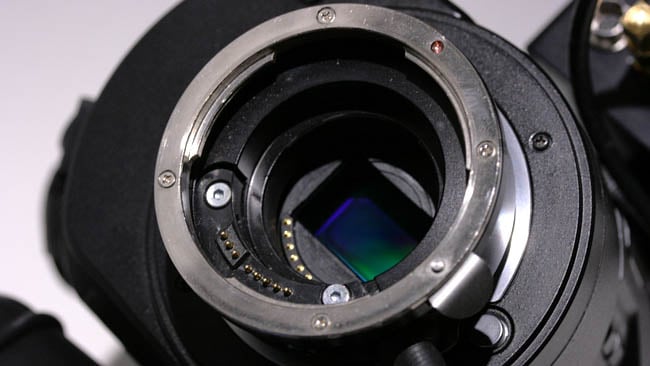
MTF's Effect lens controller is a great example of a complex bit of electronics for a niche market
Someone (who shall remain nameless) has recently started crowdfunding a filmmakers' widget (that we won't describe) which, per policy, we'll probably talk about once it becomes a full-fledged product. Suffice to say that it's a fairly accomplished piece of micro-electronics that a decade ago would have required the resources of a small company with full-time engineering staff. The fundamental advancement here is not really in the underlying tech. It has long been possible to make wireless focus devices, timecode processing tools, image processors and all the other ancillary tools of modern filmmaking. It's just recently become a lot, a lot easier.
What we're talking about is programmable logic devices (FPGAs), micro-controllers and the vast improvement in the development tools required to use them. This raises some niche projects from pipe dream to practical reality. It also allows people to add features that wouldn't previously have existed. It's become easier to produce a larger product range by switching features on and off, and to allow field updates and upgrades. Bigger companies with bigger toys, from companies like Atomos and AJA all the way up to the really enormous camera manufacturers, are also huge beneficiaries of the fact that things have become so much easier.
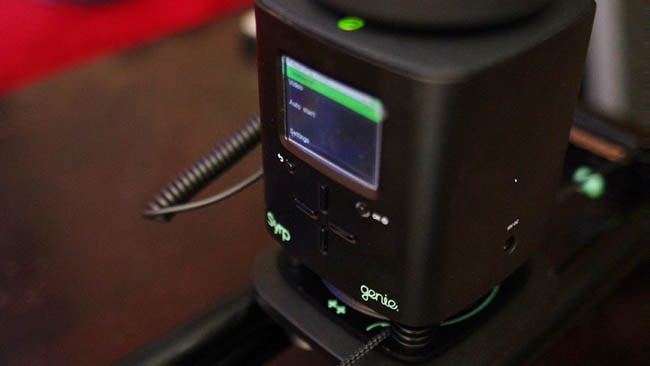
Syrp's Genie slider provides enormous capability for time-lapse photography - a high end piece of technology for a very small market
On this basis, then, don't be surprised if some of the small plots down the back of NAB's south hall, which are often the smallest and the last to go — and therefore the cheapest — are occupied by a couple of recent graduates sitting behind a table with something genuinely impressive on it. As with so much film and television gear, the limitation is now not so much hardware development as it is the ideas driving the designs, and that's a good thing.
And the rest
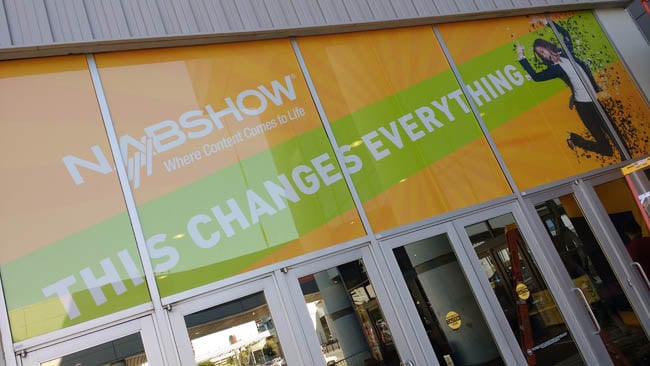
No, it doesn't
LEDs will get brighter. Flash storage will get cheaper. The Las Vegas sun will beat down on the outside broadcast area. All of these things are predictable. What's less predictable is whether we'll see any fundamental advances in-camera, such as the sudden emergence of a compromise-free global shutter or an improvement in the relationship between sensor size, sensitivity and dynamic range (which might well amount to much the same thing.) There have been a lot of very good cameras, recently. More seems like a big ask, but then it's a big show.
It's always difficult to end pieces like this on an even-handed note because the thing mentioned last invariably takes precedence. As such, either approach NAB with the idea that all these things are useful but none of them are really world-changing, or, despite the fact that none of these things is world-changing, approach NAB with the idea that they're all useful. Fair?
Tags: Production


Comments